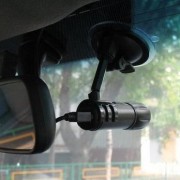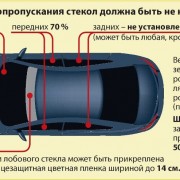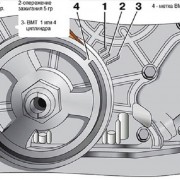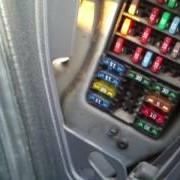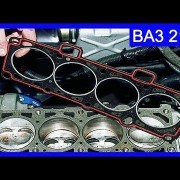История бренда Bosch
Содержание:
Controversy
Role in emission cheating software
In 2006, Volkswagen executives asked Bosch for help in developing software for their emission defeat devices. Volkswagen is one of Bosch’s biggest customers. Volkswagen engineers provided detailed specifications to Bosch, which wrote the necessary code. Bosch was apparently concerned about the legality of software and asked Volkswagen to assume responsibility if the fraud was discovered, but Volkswagen refused.
On 1 February 2017, Bosch agreed to pay consumers in the United States $327.5 million as compensation for its role in devising the software.
Bosch also provided emissions software for Fiat Chrysler’s used in 100,000 model year 2014–2016 Grand Cherokee SUVs and Ram trucks and agreed to pay affected consumers $27.5 million as part of a broader settlement in January 2019.
Biography
This article was initially published in Today’s Engineer on September 2006
In the late 1800s, the idea of an internal combustion engine must have seemed wacky to steam engine designers. The power from steam engines came mainly from the condensation of steam, creating a partial vacuum within a cylinder and causing atmospheric pressure to propel a piston inward. The fire that produced the steam occurred outside the cylinders, so steam engines were external combustion engines. In the new type of engine, the fire occurred, surprisingly, within the cylinders, meaning that fuel and air had to be brought into a cylinder, the gaseous mixture had to be ignited, and the waste products had to be removed before the cycle could start again. Devising a means of igniting the fuel-and-air mixture within the cylinder was the greatest technological challenge. The most famous contributor to its achievement was Robert August Bosch.
Bosch was born on 23 September 1861, in Albeck, near Ulm in the independent state of Württemberg, which ten years later became part of the newly unified Germany. He trained as a mechanical engineer and then increased his knowledge and skills by working for a series of leading electrical manufacturers in several countries — for Sigmund Schuckert in Nürnberg, for Thomas Edison and Sigmund Bergmann in the United States, and for the Siemens Brothers company in England.
Bosch returned to Germany, and in 1886 set up his own company in Stuttgart to produce a variety of electrical equipment. The company struggled through its early years, but achieved prosperity in the late 1890s, principally as the result of two new products for combustion engines. Bosch developed an electrical generator, a magneto, for such engines, and his employee Gottlob Honold invented a spark plug to ignite the fuel-and-air mixture in the cylinders. These two products became the mainstay of the Bosch company and earned it worldwide success. In 1914, before war broke out, the company had 4,700 employees and 88 percent of its production was exported.
The Bosch company developed many other devices for automobiles, such as headlamps, windshield wipers, horns and oil pumps. Bosch worked to diversify the company. Beginning in the late 1920s, it began producing home appliances, and it enjoyed considerable success with its refrigerators in the 1930s. Other new product lines included radios, power tools and hydraulic systems.
Bosch espoused progressive social views, favoring free trade and arbitration for labor disputes. In 1906, he instituted an eight-hour working day. With the wealth his company generated, he became a leading philanthropist. In the 1930s, Bosch came into conflict with the National Socialists. He died on 9 March 1942 of complications from an ear infection, in the midst of a war he opposed. Since his death, engineers at the Bosch company have continued to develop important new technologies. Today the Bosch Group consists of three main divisions — automotive technology, industrial technology, and consumer goods and building technology.
Locations
Research center in Renningen, Germany
Through a complex network of over 440 subsidiaries and regional entities, the company operates in over 60 countries worldwide. Including sales and service partners, Bosch’s global manufacturing, engineering, and sales network covers nearly every country in the world. At 125 locations across the globe, Bosch employs roughly 64,500 associates in research and development.
British Operations
In the UK, Bosch has its corporate head office in Denham, Buckinghamshire, and employs circa. 5200 associates. There are also around 40 other Bosch Group locations throughout the country, including Coventry, Glenrothes, St Neots, Stockport, Stowmarket, Liverpool, Milton Keynes, Worcester and York.
Alongside sales and support functions for all Bosch business sectors in the region, the company also manufactures boiler systems, mobile hydraulics, packaging machinery alongside lawn and garden products in the UK.
In March 2019, Bosch opened its London Connectory, a Shoreditch-based «co-innovation space» open to partners from the public, private and academic sectors, from start-ups to multinational organisations.
North American Operations
In North America, Robert Bosch LLC (a wholly owned Bosch subsidiary) has corporate headquarters in Farmington Hills, MI. Three Research Technology Centers are located in Pittsburgh, PA, Palo Alto, CA and Cambridge, MA. Factories and distribution facilities are located in Mt. Prospect, Illinois; Hoffman Estates, Illinois; Broadview, Illinois; Kentwood, Michigan; Waltham, Massachusetts; Clarksville, Tennessee; Anderson, South Carolina; Charleston, South Carolina; South Bend, Indiana (to close 2011); and 11 other cities. There are also two corporate sites in Brazil and ten in Mexico where a central purchasing office for all divisions of Bosch Group is located in Broadview, Illinois. In North America, Bosch employs about 24,750 people in 80 locations, generating $8.8 billion in sales in 2006.
In May 2015, Bosch Security Systems opened its newly constructed distribution center in Greer, South Carolina. The distribution center adds more than 50 new associates in the state and will receive, store and ship more than 50,000 different products for video surveillance, intrusion and fire detection, access control and management systems and professional audio and conference systems.
Indian Operations
Bosch entered India in 1922, when Illies & Company set up a sales office in Calcutta. For three decades, the company operated in the Indian market only through imports. In 1951, Bosch set up its first manufacturing plant in India.
Currently, Bosch India has a turnover of over $3 billion and over 31,000 employees spread across 10 locations and 7 application development centers. 84% of Bosch India revenues come from its automotive business, with the remaining 16% split between its non-automotive businesses that include packaging, energy and building solutions, power tools and consumer retail. Bosch also has an R&D facility in Coimbatore and Bangalore, India. This is Bosch’s largest R&D facility outside its home market of Germany. In September 2014, Bosch announced the launch of a locally developed eye-care solution in India. The company’s new eye screening and detection system offers a combination of hardware and software and provides affordable eye care.
Bosch India is listed on the Indian stock exchanges and has a market capitalization of over $12 billion.
Биография.
Родился будущий гений механики и техники в 1861. Роберт стал 11 ребенком в семье. Его отец, будучи землевладельцем, считался очень образованным для свего времени. Он поощрял в детях желание учится.
Это было удивительное время. Золотой век науки, когда электротехника только-только рождалась в подвалах исследователей-самоучек, которых, порой, считали сумасшедшими.
Это время было бескрайним полем для творчества и попыток применения электричества, всюду, где только могла позволить фантазия. Именно это, еще не до конца освоенное море возможностей и тайн поглотило в себя Роберта Боша. Стоит отметить, что отец мальчика еще с детских лет был доволен выбором сна, и только поддерживал в нем желание стать исследователем и ученом. Не смотря на то, что старший Бош был зажиточным землевладельцем, его пугала даже мысль о том, что сын будет также копаться в земле, как он.
Бош заканчивает техническую школу, и после этого начинает активно осваивать все тонкости разработки электрического оборудования, он путешествует и работает в многочисленных компаниях, в том числе в фирме Siemens и в фирме Томаса Эдисона.

мастерская Роберта Боша
За это время Роберт растит в душе идею об открытии своего бизнеса, и она постепенно его захватывает. Таким образом, вернувшись к себе на родину в 25 лет, он открывает свою фирму.

первое магнето (1887 год)
В 1887 году молодой Роберт Бош создает устройство зажигания от магнето, которое позже сыгравшее важнейшую роль в истории развития автопромышленности.
Первая мировая война
Главный, и серьезный удар предприятию Боша нанесли совсем не конкуренты, а более серьезный враг – война. Первая мировая война далеко назад отбросила автопроизводство в его общественном виде. А кризис, который последовал за ней, практически стадом буйволов растоптал производство стран Европы. Великий изобретатель потерял многие свои предприятия, во многих странах, которые воевали против Германии. Но Бош не был бы гениальным предпринимателем и выдающимся исследователем, если бы он не сумел выйти из такой затруднительной ситуации. Потом, спустя годы, часть зарубежных предприятий вернулась к своему законному владельцу. Одни — благодаря джентльменскому соглашению. А другие были отсужены.
клаксон Роберта Боша
Уже первая послевоенная автомобильная выставка блистала его новым клаксоном, который произвел настоящий фурор у публики.

рекламный плакат
Уже к середине 1920-х годов Бош создал ряд устройств, который заполнили автомобильный рынок и в значительной степени облегчили и обезопасили вождение – автомобильное радио, указатели поворотов, противотуманные фары, электрические стеклоочистители и клаксоны, а также одно из наибольших достижений того времени – первый дизельный насос…
В конце 1920-х годов Бош принимает кардинальное решение – автомобили теперь будут для компании на втором плане, отныне фирма будет специализироваться на выпуске абсолютно любой электрической техники. Так, например, в 1933 году компания Bosch шокировала публику первым холодильником для дома. Это чудо техники могло сохранять продукты свежими в течении 2-3 дней, что для тех времен было серьезным достижением.
Роберта Боша уважали и любили, ценили как выдающегося гения. Но, в то же время, его и боялись, особенно опасаясь вспышек гнева. Он, как и любая выдающаяся личность, обладал массой противоречивых качеств. Бош не видел различий между директором завода и простым рабочим, считая. Что каждый должен работать честно и самоотверженно. Также он всегда говорил, что нет неразрешимых проблем. Роберт Бош был уверен в том, что намного лучше потерять деньги, но ни в коем случае нельзя потерять к себе доверие. Он напрочь отвергал возможность сиюминутной выгоды и тщательно продумывал каждое свое изобретения, пытаясь сделать его максимально качественным. Бош одним из первых ввел на своих заводах 8-часовой рабочий день, а также показал миру такую социальную защиту своих сотрудников, которая для того времени была совершенно не характерна. Также, наследуя Генри Форда, он ввел на своих фабриках первые в Европе конвейерные производства.
Продукция, созданная на заводах Боша, ценилась своим качеством. Это обеспечивали и постоянные проверки. Например, в компании Боша, практиковалось испытание продукции не только конструкторами или испытателями, но и директорами, даже сам основатель нередко становился испытателем продукции.
Благодаря таким изменениям и своему мировоззрению Бош как-раз и заработал любовь своих сотрудников.
Не стало революционера автомобилепроизводства в 1942 году. Но, он продолжает жить в каждом автомобиле, которые может ездить благодаря его изобретениям. Ведь, если бы более века тому назад, человек по имени Роберт Бош не предложил воспламенять топливно-воздушную смесь электрической искрой, то вполне возможно, что и не было бы сегодня автопроизводства в том виде, в котором мы его знаем сейчас.
Joint ventures
BSH Bosch und Siemens Hausgeräte
BSH Bosch und Siemens Hausgeräte GmbH, in which Bosch acquired all shares in 2014, is one of the world’s top three companies in the household appliances industry. In Germany and Western Europe, BSH is the market leader. Its portfolio includes the principal brand names Bosch and Siemens, Gaggenau, Neff, Thermador, Constructa, Viva and Ufesa brands, and further six regional brands. Bosch household appliances for the North American market are mainly manufactured at its factory near New Bern, North Carolina.
EM-motive
Daimler AG and Bosch established a 50:50 joint venture (JV) to develop and manufacture electric motors in 2011. The JV, called EM-motive GmbH, manufactures traction motors for electric, fuel cell and extended-range vehicles at a facility in Hildesheim, Germany.
In 2019 Bosch acquired the remaining shares and assumed full control of the company.
Purolator Filters
Bosch co-owned Purolator Filters in a joint venture with Mann+Hummel until 2013. In 2013 the Mann+Hummel Group acquired Bosch’s stake.
SB LiMotive
In June 2008 Bosch formed SB LiMotive, a 50:50 joint company with Samsung SDI. The company held ground breaking ceremony for a 28.000 m2 lithium-ion battery cell manufacturing plant in September 2009 and it is scheduled to start production for hybrid vehicles in 2011 and for electric vehicles in 2012. The plant will generate 1,000 jobs in Ulsan, Korea in addition to the 500 employees in Korea, Germany and the United States. SB LiMotive was officially ended in September 2012 with both companies focusing on automotive batteries alone.
Corporate affairs
Robert Bosch GmbH, including its wholly owned subsidiaries such as Robert Bosch LLC in North America, is unusual in that it is an extremely large, privately owned corporation that is almost entirely (92%) owned by a charitable foundation. Thus, while most of the profits are invested back into the corporation to build for the future and sustain growth, nearly all of the profits distributed to shareholders are devoted to humanitarian causes.
Diagram of Robert Bosch GmbH.
As shown in the diagram (above), the Robert Bosch Stiftung (Robert Bosch Foundation) holds 92% of the shares (Beteiligung) of Robert Bosch GmbH, but no voting rights (Stimmrecht). The Robert Bosch Industrietreuhand KG (Robert Bosch Industrial Trust KG), with old members of the company management, agents of the Bosch family, and other eminent people from the industry (such as Jürgen Hambrecht, CEO of BASF), have 93% of the votes (Stimmen), but no shares (0.01%). The remaining 8% of shares and 7% of voting-rights are held by the descendants of the company founder Robert Bosch (Familie Bosch).
For example, in 2004, the net profit was US$2.1 billion, but only US$78 million was distributed as dividends to shareholders. Of that figure, US$72 million was distributed to the charitable foundation, and the other US$6 million to Bosch family stockholders. The remaining 96% of the profits were invested back into the company. In its core automotive technology business, Bosch invests 9% of its revenue on research and development, nearly double the industry average of 4.7%.
Инновацию в массы
Сразу же запатентовав свое изобретение, изобретатель начинает свое путешествие по странам и континентам. Мастерская уже давно канула в лету, а на ее месте выросла большая фабрика. Отныне, магнето Боша устанавливают на английские, итальянские и американские, французские автомобили. На этом Бош не останавливается, и он дальше трудиться для развития автоиндустрии. Видимо, он чувствовал, что где-то его ждет еще одна непокоренная вершина, которую может занять только он.

исследовательский центр
Работа в исследовательских центрах практически не прекращалась ни на минуту. Роберт Бош работал без передышки, и требовал того же от своих подчиненных.
Прошло немного времени, и начали проявляться недостатки магнето. Во-первых, механизм был очень сложным. Во-вторых, он был крайне не универсальным – для каждой новой модели двигателя приходилось заново конструировать зажигание.
Бош проводит ряд экспериментов, направленных на устранение проблем в магнето. Это приводит его к новой революции – он создает магнето высокого напряжения, принцип работы которого основывается на применении деталей, без которых сегодня невозможно представить автомобиль с двигателем внутреннего сгорания, а именно – свечи зажигания. Таким образом, две катушки, расположенные на якоре вырабатывали ток высокого напряжения, после чего он поступал на свечи зажигания и преодолевал расстояние между электродами в виде искры.

свеча зажигания Роберта Боша
Создав зажигание от магнето, Роберт Бош встал на ноги и выбился в лидеры среди производителей моторов. А когда он разработал свечи зажигания, то стал самым талантливым инженером своего времени, заняв передовые позиции в мире автопромышленности.
Свечи представляли собой устройство с керамическим изолятором. Их применение позволило снять вопрос об универсальности – отныне магнето высокого напряжения можно было использовать на любых типах двигателей. Также, благодаря этому появилась возможность существенно увеличить мощность автомобильных силовых агрегатов.
Немалую рекламу Бошу и его изобретениями делали автогонки. Те машины, на которых были установлены системы зажигания Боша, и за рулем которых иногда даже сидел сам изобретатель, всегда приходили к линии финиша первыми, в отличие от своих соперников, которые очень часто вынуждены были сходить с дистанции из-за использования несовершенных генераторов, которые не выдерживали напряжения, ломались или взрывались.
Фирма Роберта Боша являлась уникальной. Ведь, не создавая автомобили, она все-же была тесно связана с автопроизводством, и стояла плечом к плечу с главными автопроизводителями мира. При этом, Бош не останавливался на создании и усовершенствовании систем зажигания, так как он опасался краха своего дела, считая, что построить стабильную фирму на товаре-однодневке невозможно. Бах постоянно переживал, что его изобретение может вытеснить другое изобретение, более совершенная система. Потому Бош искал что-то новое. Его настойчивость в работе себя оправдала. К началу 1910-х годов компания Боша производила практически все виды электрооборудования, начиная с магнето и заканчивая фарами.






